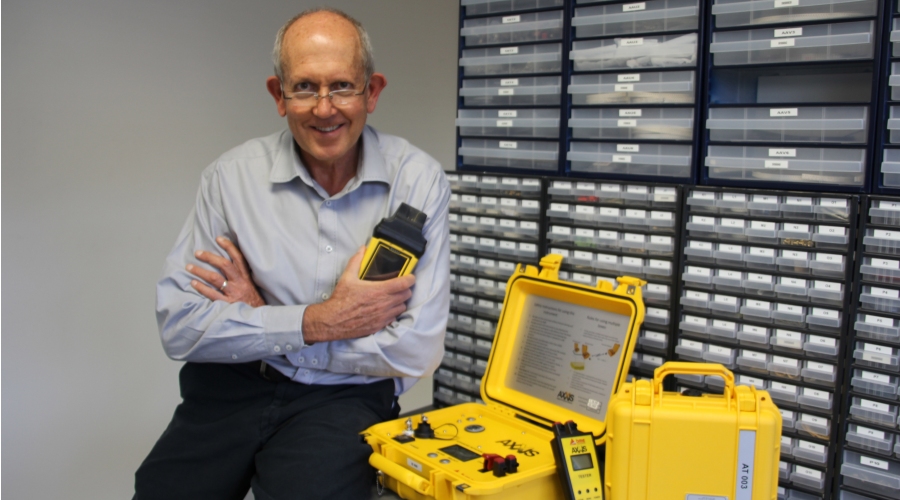
Tony Rorke, Technical Director, BME
27 February 2017 – Johannesburg: Lightning strikes on opencast mines and quarries pose a regular threat to life and productivity, and are of particular concern to blasting personnel and equipment; but there is still much to be learned about how best to manage this risk.
According to Tony Rorke, technical director of explosives leader BME, standard procedures to protect workers – by requiring them to clear the blast area under certain weather conditions – could be improved by recent technologies.
“The electrostatic potential that builds up in the ground before and during a thunderstorm is a good indicator of a likely strike in or around the affected area,” said Rorke. “Modern sensors to detect this electrostatic build-up can be arrayed around a pit to measure this potential and provide a reliable prediction of when, where and how large a strike will be; these systems rely on measuring the charge in the ground, which rises when the risk of a strike increases.”
Combined with storm direction trends and strike patterns, this prediction technology gives mines an advance warning that is useful for raising the alert level. The two strategies work well when employed hand-in-hand and can improve safety while minimising lost time.
“Importantly, these systems are better at picking up some of the most dangerous kinds of lightning strikes – such as positive cloud-to-ground lightning bolts – which can strike anywhere within several kilometres of the anvil of the thunderstorm,” he said. “Often, they are experienced in areas where the sky is clear or only slightly cloudy – hence their being named ‘bolts from the blue’.”
Traditional systems for detecting lightning include small portable devices that detect the raised electrostatic activity and thus provide an indication of nearby lightning; carried by blasting foremen, they rely on a subjective decision on whether to withdraw people to safety or not.
There are also services provided by weather bureaus, using a country-wide network of sensors that can detect and locate every lightning strike that occurs. This allows tracking of storm speeds and directions as well as the strike energy of each strike, allowing mines to be warned of possible approaching thunderstorms. This can result in over-conservative reaction, leading either to the warnings being ignored (which negatively affects safety) or excessive work stoppages (which undermines productivity).
“Both the portable units and the weather services rely on detecting strikes rather than predicting strikes,” said Rorke, “and they do not predict the dangerous positive strikes that usually occur ahead of a storm or at the trailing end.”
Predicting positive lightning strikes is particularly important, he said, as their substantial power is likely to initiate explosives charges – be they detonator, booster or bulk column charges – in blast-holes. However, technological advances have been made on the field of detonators, which can enhance site safety and help manage lightning risk, said Rorke.
“The most significant of these improvements relate to the progress from electric to electronic detonators,” he said. “Electric detonators are particularly prone to electric currents and will almost certainly initiate from a nearby or direct lightning strike as they have no protection barriers against surge currents.”
These detonators have incoming leads connected directly to the fusehead, and must not be used in mines during lightning season, he warned. Electronic delay detonators, on the other hand, have circuit boards containing a processor, resistors and electric surge protectors between the incoming leads and the fusehead.
“At BME, we have invested considerable research and development into our recently released AXXIS GII electronic delay detonators, which have four protection barriers against surge currents and spikes caused by lightning strikes,” he said.
These are:
“It is therefore less likely that an electronic detonator with similar protection barriers will be initiated by a negative cloud-to-ground lightning strike,” said Rorke.
Such detonators would not necessarily remain functional, though; and when subjected to a strike by the less frequent and more powerful positive cloud-to-ground strikes, he said it was it was probable that part of the explosives charge in a hole would initiate.
About BME: BME is the leading supplier of explosives and services to the African mining, quarrying and construction industries. Focusing on safety, supply security and value adding technical services, BME strives to remain at the forefront of technology by regularly participating in the research and trials of new blasting techniques and products, as well as attending and presenting at technical conferences worldwide. BME has operations in Angola, Botswana, Burkina Faso, DRC, Malawi, Mali, Mauritania, Namibia, South Africa, Senegal, Sierra Leone, Swaziland, Zambia, Zimbabwe and where opportunities present themselves.
For further information visit: www.bme.co.za